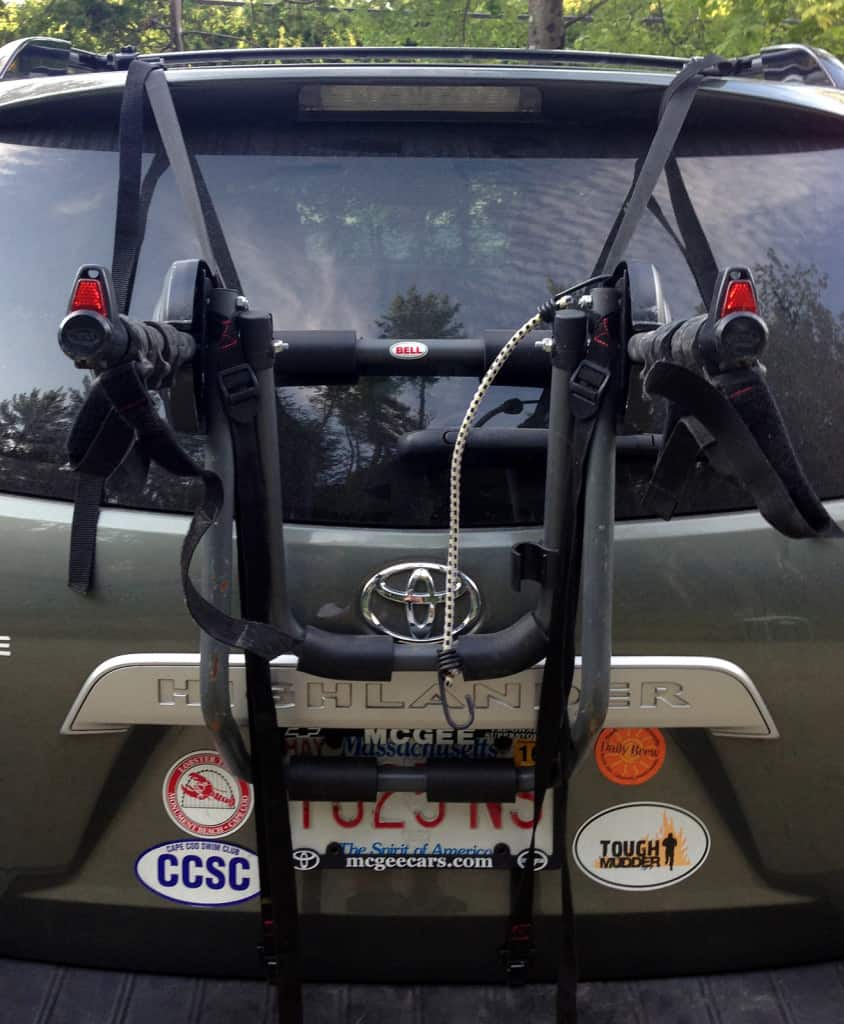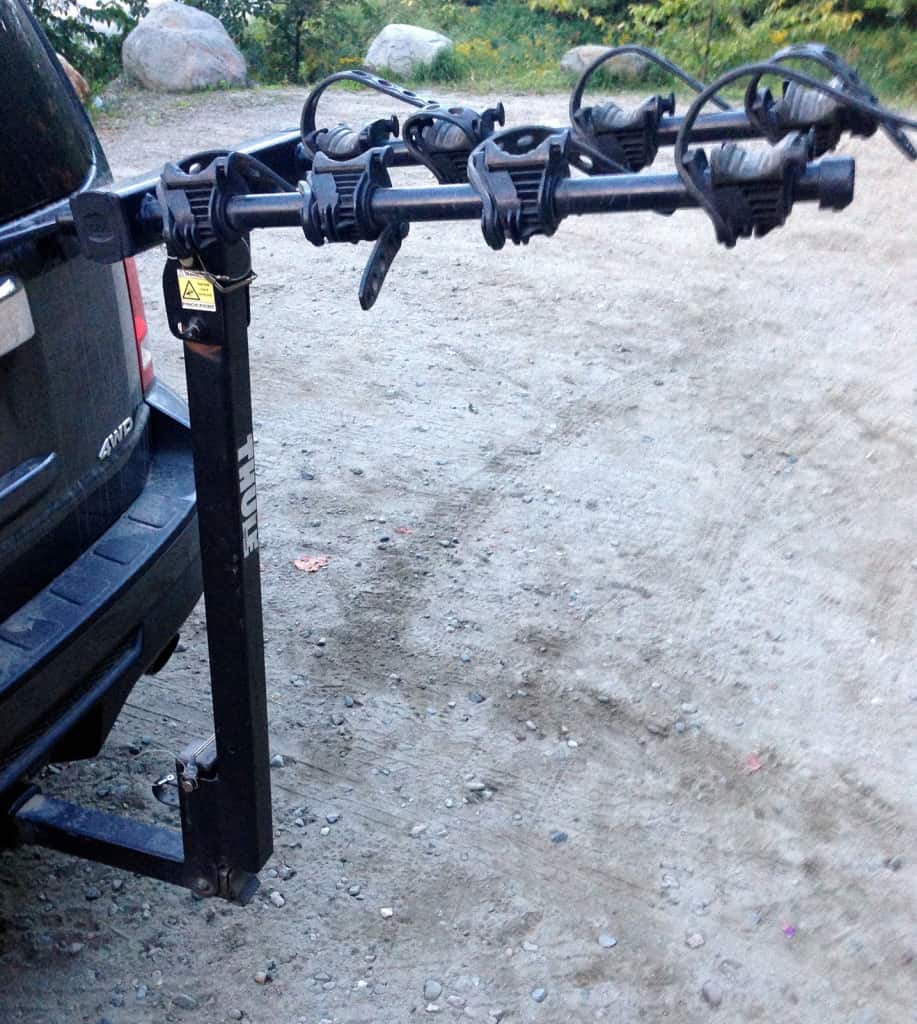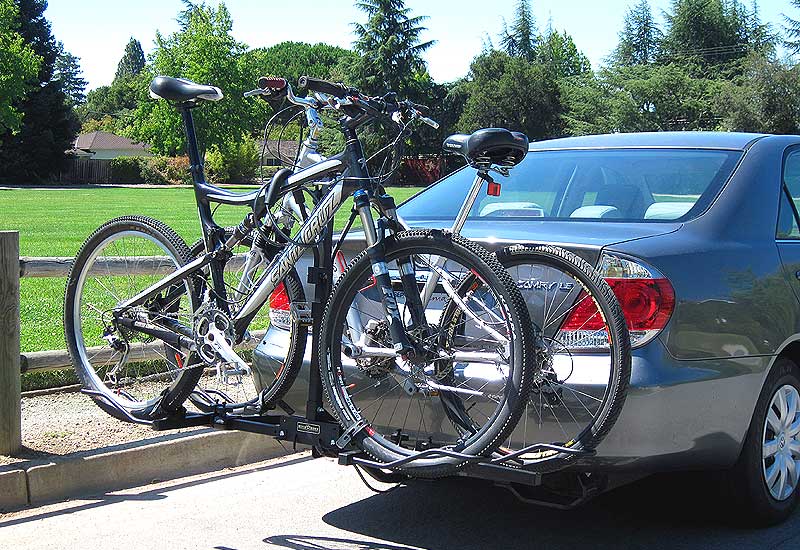While your bike might be an excellent means of getting from point A to point B, we at Backroads understand the logistics of transporting bikes from one location to the next. Sometimes, it’s necessary to carry your bicycle on a car bike rack to reach those perfect cycling spots. If you’d prefer to leave the planning and logistics to us, our expertly planned Biking and Multi-adventure Trips offer a seamless experience where everything – including the bikes! – is taken care of for you. If you're gearing up for your own adventure, keep reading to find out which bike rack is perfect for you.
There are four primary types of bike rack mounting systems: trunk mount, roof mount, hitch mount and spare tire mount. Within these categories, there are different brands and styles, which we’ll explore below.
Before choosing a type of car bike rack, it's important to consider the frequency of use, vehicle compatibility, the number of bikes needing transport and budget.

Types of Bike Racks for Cars
Trunk Mount Racks
Typically the most inexpensive of the bike rack systems ($50–$200), trunk-mounted racks are designed to rest on the back of a car trunk while straps secure it in place. Arms and cradles support the bike to keep it securely in place.
Pros: These racks are great for the recreational cyclist, and they can be used on multiple vehicles since fit is adjustable. Trunk-mounted racks are light, highly portable and easy to store when not in use. With some practice, they are easy to mount and take off.
Cons: Trunk racks are often limited in their load capacity (two to three bikes is typically the max), and once mounted, they interfere with trunk access. Additionally, the effectiveness of the rack relies on the straps being secured tightly. If done poorly, the bikes might shift or sway while driving. Lastly, the design of trunk racks can make it difficult to lock bikes to your vehicle, if security is a concern.
Hitch Mount Racks
Although more expensive than trunk-mounted racks ($150 to more than $500), hitch racks are a great option for frequent users—especially for those needing to carry more than three bikes. Hitch racks are typically designed to haul two to five bikes. These racks are generally either platform style or hanging cradle style, both of which have their advantages and disadvantages.
Hanging Cradle Style – The style where your bikes hang from the rack The advantage to this style is that they are typically less expensive than the platform style, lighter weight, and will usually offer more ground clearance. On the downside, the bikes aren’t held as securely in place and will often sway and make contact with the other bikes while in transit. Minor abrasions to the bike paint can result.
Platform Style – The style where the bikes sit on a platform. The advantage to this style is that it’s the easiest and most secure way to load your bikes and keep them in place, preventing any abrasions or damage to the bikes. The disadvantages are that these racks will typically cost more and can be a bit heavy and awkward to carry and store when not in use.
When purchasing a hitch-mounted rack, be sure to check the tongue load capacity of your vehicle’s hitch (typically 10 percent of the towing capacity). Depending on the hitch class, too much weight could cause a hitch to bend or to break if not loaded properly. Be sure to check your owner’s manual or hitch (if installed aftermarket) to determine the load capacity.
Pros: Hitch racks are simple to install, and they are incredibly sturdy when compared to trunk-mounted racks. They are great for frequent users, but they are easily removed should you decide you don’t need the rack for any period of time. Many hitch racks come with locks or can be easily secured to a hitch with a cable lock.
Cons: Hitch racks, especially platform models with features that allow the rack to swing or drop out of the way of the rear hatch/door of the vehicle, can be expensive. However, more inexpensive models without these features will block entry to trunks or rear doors. Models designed to carry four or five bikes can be heavy, and you might experience a little sway when fully loaded.
Backroads Pro Tip
A loaded hitch rack adds a few extra feet of overall length to your vehicle, so it is important to be mindful when backing up or maneuvering in tight spaces!
Roof Mount Racks
If you don’t mind lifting bikes on top of your vehicle, this type of car bike rack is an excellent choice for the serious cycling or outdoor enthusiast because of how versatile it can be. The cost, while moderate ($200 to more than $500), can get high if you start adding multiple cradles or if you need to build a whole rack system from scratch. Many cars and trucks come from the factory with rails, mounting points or crossbars for securing bike racks. For vehicles without preinstalled mounting points, you can “build” your own using rack manufacturer specifications. Beyond bikes, roof racks are also great for hauling everything from small boats to skis to cargo boxes.
Pros: Bikes (or other types of gear) are tucked out of the way, which leaves unimpeded access to the car’s interior and trunk space. With a number of mounting systems for different types of gear and for the different seasons, a bicycle roof rack is highly versatile. With a number of locking systems available, it’s also a secure option. Bikes do not move or sway easily.
Cons: Lifting and reaching are required to secure bikes, so this might not always be a great option for taller vehicles or people who have difficulty with heavy lifting. Racks are not as easily removed as the hitch- or trunk-mounted systems and often require some tools. Wind resistance or wind noise while driving can be noticeable and can also have a negative but minor effect on gas mileage.
Backroads Pro Tip
Don’t forget the clearance on your vehicle changes with bikes on the roof. When fully loaded with gear, your vehicle might not fit in certain low-clearance areas, such as parking garages. To avoid damage, always be mindful of this.
Spare Tire Mount Racks
Similar to a trunk mount, this quick, easy and relatively inexpensive ($50–$200) rack is a great choice for any sport-utility or off-road vehicle with a spare tire mounted on the rear of the vehicle. Generally these racks rest on the tire or screw in securely to the tire mount.
Pros: These spare tire mount bike racks for cars are quick and easy to install, they are not permanently affixed to the vehicle, and they are moderate in cost.
Cons: These racks are only able to hold a maximum of two bikes, and tire covers must be removed which can be a bit of an inconvenience. A loaded spare tire rack also adds a few extra feet of overall length to your vehicle, so it is important to be extra cautious when backing up or maneuvering in tight spaces.
Bike Rack Manufacturers
Like many other things in the biking world, a number of different car bike rack manufacturers offer different levels of features, craftsmanship and price. The list of brands here is by no means comprehensive, but it includes a few quality ones that many have come to rely on over the years. Also, most manufacturers will have a vehicle fitting guide to help you select the best model for your vehicle.
• Thule www.thule.com
• Yakima www.yakima.com
• 1UP USA www.1upusa.com
• Rocky Mounts www.rockymounts.com
• Saris www.saris.com
• Kuat www.kuatracks.com









